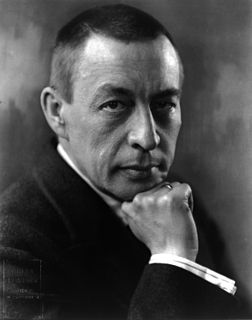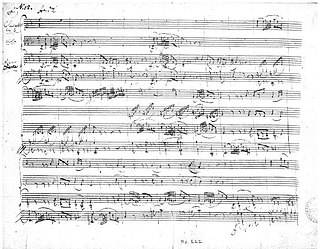Related Research Articles

Johannes Brahms was a German composer, pianist, and conductor of the Romantic period. Born in Hamburg into a Lutheran family, he spent much of his professional life in Vienna. He is sometimes grouped with Johann Sebastian Bach and Ludwig van Beethoven as one of the "Three Bs" of music, a comment originally made by the nineteenth-century conductor Hans von Bülow.

Robert Schumann was a German composer, pianist, and influential music critic. He is widely regarded as one of the greatest composers of the Romantic era. Schumann left the study of law, intending to pursue a career as a virtuoso pianist. His teacher, Friedrich Wieck, a German pianist, had assured him that he could become the finest pianist in Europe, but a hand injury ended this dream. Schumann then focused his musical energies on composing.

Carl Maria Friedrich Ernst von Weber was a German composer, conductor, virtuoso pianist, guitarist, and critic who was one of the first significant composers of the Romantic era. Best known for his operas, he was a crucial figure in the development of German Romantische Oper.

Charles-Camille Saint-Saëns was a French composer, organist, conductor and pianist of the Romantic era. His best-known works include Introduction and Rondo Capriccioso (1863), the Second Piano Concerto (1868), the First Cello Concerto (1872), Danse macabre (1874), the opera Samson and Delilah (1877), the Third Violin Concerto (1880), the Third ("Organ") Symphony (1886) and The Carnival of the Animals (1886).

Sergei Vasilyevich Rachmaninoff was a Russian composer, virtuoso pianist, and conductor. Rachmaninoff is widely considered one of the finest pianists of his day and, as a composer, one of the last great representatives of Romanticism in Russian classical music. Early influences of Tchaikovsky, Rimsky-Korsakov, and other Russian composers gave way to a thoroughly personal idiom notable for its song-like melodicism, expressiveness and rich orchestral colours. The piano is featured prominently in Rachmaninoff's compositional output and he made a point of using his own skills as a performer to explore fully the expressive and technical possibilities of the instrument.
In musicology, the opus number is the "work number" that is assigned to a musical composition, or to a set of compositions, to indicate the chronological order of the composer's production. Opus numbers are used to distinguish among compositions with similar titles; the word is abbreviated as "Op." for a single work, or "Opp." when referring to more than one work.

Max Bruch was a German Romantic composer, teacher, and conductor who wrote more than 200 works, including three violin concertos, the first of which has become a staple of the violin repertoire.

Ferruccio Busoni was an Italian composer, pianist, conductor, editor, writer, and teacher. His international career and reputation led him to work closely with many of the leading musicians, artists and literary figures of his time, and he was a sought-after keyboard instructor and a teacher of composition.

Helmut Friedrich Lachenmann is a German composer of contemporary classical music. His work has been associated with "instrumental musique concrète".
A prelude is a short piece of music, the form of which may vary from piece to piece. While, during the Baroque era, for example, it may have served as an introduction to succeeding movements of a work that were usually longer and more complex, it may also have been a stand-alone piece of work during the Romantic era. It generally features a small number of rhythmic and melodic motifs that recur through the piece. Stylistically, the prelude is improvisatory in nature. The prelude also may refer to an overture, particularly to those seen in an opera or an oratorio.

Amy Marcy Cheney Beach was an American composer and pianist. She was the first successful American female composer of large-scale art music. Her "Gaelic" Symphony, premiered by the Boston Symphony Orchestra in 1896, was the first symphony composed and published by an American woman. She was one of the first American composers to succeed without the benefit of European training, and one of the most respected and acclaimed American composers of her era. As a pianist, she was acclaimed for concerts she gave featuring her own music in the United States and in Germany.

Edison Vasilievich Denisov was a Russian composer in the so-called "Underground", "alternative" or "nonconformist" division of Soviet music.

Nikolai Karlovich Medtner was a Russian composer and pianist. After a period of comparative obscurity in the twenty-five years immediately after his death, he is now becoming recognized as one of the most significant Russian composers for the piano.
Berthold Goldschmidt was a German Jewish composer who spent most of his life in England. The suppression of his work by Nazi Germany, as well as the disdain with which many Modernist critics elsewhere dismissed his "anachronistic" lyricism, stranded the composer in the wilderness for many years before he was given a revival in his final decade.
James Orville Fulkerson is an American composer, now living in the Netherlands, of mostly stage, orchestral, chamber, vocal, piano, electroacoustic, and multimedia works. He is also active as a trombonist.

Mantra is a composition by the German composer Karlheinz Stockhausen. It was composed in 1970 and premiered in autumn of the same year at the Donaueschingen Festival. The work is scored for two ring-modulated pianos; each player is also equipped with a chromatic set of crotales and a wood block, and one player is equipped with a short-wave radio producing morse code or a magnetic tape recording of morse code. In his catalogue of works, the composer designated it as work number 32.
The F-A-E Sonata, a four-movement work for violin and piano, is a collaborative musical work by three composers: Robert Schumann, the young Johannes Brahms, and Schumann's pupil Albert Dietrich. It was composed in Düsseldorf in October 1853.
A ballade, in classical music since the late 18th century, refers to a setting of a literary ballad, a narrative poem, in the musical tradition of the Lied, or to a one-movement instrumental piece with lyrical and dramatic narrative qualities reminiscent of such a song setting, especially a piano ballade.

A clarinet-viola-piano trio, often titled "Trio for Clarinet, Viola and Piano" is a work of chamber music that is scored for clarinet, viola, and piano; or is the designation for a musical ensemble of a group of three musicians playing these instruments. This combination of instruments differs from other combinations, as the viola and the clarinet share approximately the same musical range, but not the same tone quality.

Piano four hands is a type of piano duet involving two players playing the same piano simultaneously. A duet with the players playing separate instruments is generally referred to as a piano duo.
References
- ↑ "Ernstalbrecht Stiebler – the Living Composers Project".
- 1 2 Jurek, Thom. "Three in One", Allmusic.